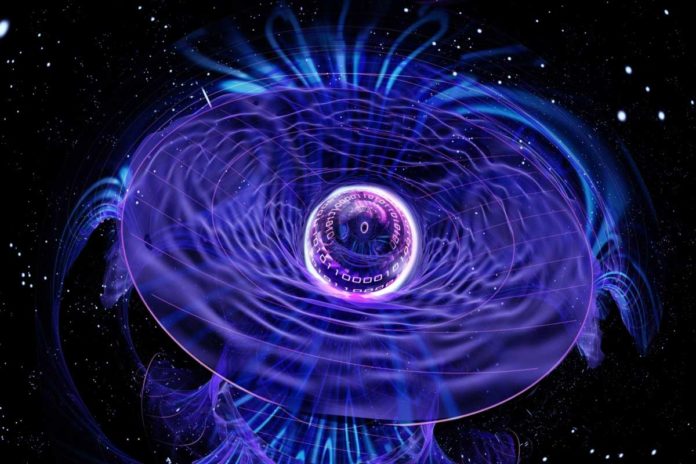A black hole is a place in space where gravity pulls so much that even light can not get out. The gravity is so strong because the matter has been squeezed into a tiny space. This can happen when a star is dying.
Anything that is unfortunate enough to be consumed has gone past the point of no return, at least according to modern physics. But now some physicists are saying that is not necessarily the case. There might be a way to find out what that black hole devoured using quantum mechanics—the rules of subatomic particle behavior at infinitesimal scales.
it could be conceivable to discover what data fell into a black hole, sort of like analyzing its stomach contents. They believe that information thought to be unrecoverable may really be scrambled or tucking away among inseparably connected subatomic particles. The group demonstrated they could really quantify when data was mixed inside the guts of a black hole, and how rapidly that occurred.
Quantum mechanics express that sets of particles will suddenly appear on the edge of a black hole’s event horizon. While one particle falls into the black hole, the other is pushed into space, taking with it a little measure of the black hole’s energy. After some time, enough vitality is stolen from the black hole with the goal that it evaporates. This is Hawking radiation.
While the black hole information paradox might seem to get in the way, scientists tried to resist it utilizing the particle in a Hawking radiation pair that escapes. Despite the fact that it gets away, it is still inseparably connected to its (presently long lost) accomplice, implying that its properties could educate us regarding the properties of the one that was swallowed.
Black holes aren’t exactly the type of thing you can bring into a lab, so scientists set up a much simpler model using a quantum computer they created. This model used three entangled atomic nuclei of the element Ytterbium. The computer used the entangled quantum bits, or qubits—the basic unit of information in quantum computing—and an additional external qubit to see when the particles became scrambled and how severely.
Scientists found that the nuclei and the trio of particles became scrambled exclusively with each other and nothing else floating around.
Kevin Landsman, a physics graduate student at the Joint Quantum Institute (JQI) at the University of Maryland in College Park said, “With scrambling, one particle’s information gets blended or spread out into the entire system. It seems lost, but it’s actually still hidden in the correlations between the different particles.”
Dr. Chris Monroe, a physicist at the University of Maryland said, “Regardless of whether real black holes are very good scramblers, studying quantum scrambling in the lab could provide useful insights for the future development of quantum computing or quantum simulation.”
The research is published in the journal Nature.
